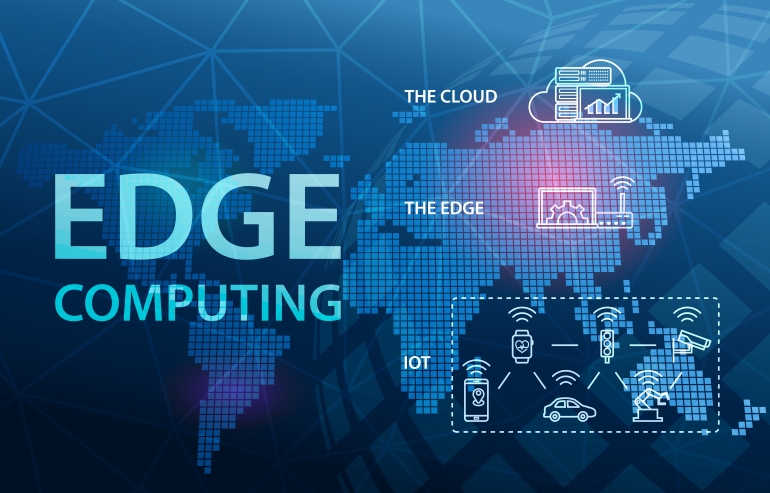From retail to manufacturing, Jürgen Hatheier, International CTO at Ciena, looks at the impact of edge cloud.

We are living through an age of rapid digital transformation. Many of the technological capabilities that enhance life today would have been difficult to imagine even five or six years ago. In the first 30 years of the internet, applications primarily focused on automating content sharing between the cloud and end users. We are now entering the next era of the internet, which includes automating physical and human tasks. As a result, cloud-native applications have emerged in many industries, including manufacturing, retail, automotive and entertainment.
SEE: Research: Digital transformation initiatives focus on collaboration (TechRepublic Premium)
Shifts in enterprise and residential application consumption models necessitate changes in infrastructure, too. Previously, most workloads lived in a centralized cloud, but now platforms distribute workloads to meet the requirements of a flawless user experience. This could be latency or other factors such as data sovereignty, operational considerations for production sites that rely on cloud compute, or IoT applications where vast amounts of data is generated at the edge and doesn’t need to hit a centralized cloud — for example, security applications that utilize AI to analyze video content for threats.
These kinds of applications are compute intensive and delay sensitive, and traditional centralized cloud architectures do not meet the latency requirements that a new generation of applications require. They need a more adaptive and distributed cloud model, with compute and storage cloud resources physically close by, at the edge of the network, as this is where content is created and consumed. This approach is referred to as “edge cloud.”
Edge cloud enhancing the retail industry
Edge cloud technology is already enabling the next generation of retail. Amazon has register-free grocery stores worldwide, several of which are in the U.K. The launch of these stores marked a significant change for the retail industry, and we will likely see this model replicated by other brands in the coming years.
Amazon Fresh uses Amazon’s “Just Walk Out” technology, which tracks customer purchases via sensor fusion. In-ceiling cameras, shelf-level sensing, real-time image recognition and deep learning are utilized to automatically add items picked up from a shelf to a shopper’s store app. Those same technologies can also recognise when a product is removed from a physical shopping cart and returned to the shelf. To achieve this, a large amount of instant data transfer is required between the store and the cloud — near-petabytes of data transfer on a daily basis.
It’s the edge cloud that enables this. According to ReportLinker, the edge data center is set to grow by $13.7 billion in the next five years. As this technology becomes more widely adopted, more use cases will arise in the retail industry.
Industry 4.0 and the edge cloud
In the world of manufacturing and supply chain logistics, edge computing is also playing a pivotal role in the next wave of digitisation. This wave is known as Industry 4.0, representing the fourth technological revolution. Some smart factories already exist in the U.K., and they are set to become more commonplace, especially as 5G becomes readily available. According to a recent Vodafone report, 5G could provide a £6.3 billion boost to UK manufacturing by 2030.
SEE: Don’t curb your enthusiasm: Trends and challenges in edge computing (TechRepublic)
Connected devices, AI, digital twins, automation and 3D printing are just some of the many advantages manufacturers can take advantage of when Industry 4.0 is fully realized, but processing power at the network edge will be the key to making this a possibility.
Reliable edge cloud architecture
To allow these applications to run seamlessly, the network of edge clouds must be constructed in a way that provides flexibility and affordability in the long run. These networks need to be able to adapt, respond and adjust resources as needed to meet the demands of the application layer, ensuring they can manage, secure and automate the network end to end.
If we make possible a more programmable infrastructure that can evolve as needed, the way we shop in the future could become a blend of contact free and in-store shopping. Edge cloud technology, when combined with 5G rolling out across the planet, will help create a resilient, faster and more immersive experience.
Intelligent data-driven automation can provide the necessary bird’s eye view of the network and edge data center that’s required to optimize the utilization of network and cloud resources while satisfying the demand for (and requirements of) dynamic applications at the edge. Unlike the centralized cloud that delivers to many customers, each edge application is specific to a much smaller subset of users and must be dynamic enough to automatically respond to the needs of local customers in an environment with limited resources.
What’s more, these data centers must maintain ultra-low latency and ensure that cloud resources are positioned appropriately to meet the performance metrics of end-user applications. Intelligent closed-loop automation can dynamically identify cloud resources in an alternative data center and route them to another path in the existing edge data center if that path does not meet the demands of the edge application.
Edge cloud technology has the potential to bring smart technology to nearly every sector. For the model to reach its full potential, new networking requirements at the edge data center must be addressed.
Jürgen Hatheier, International CTO at Ciena.
